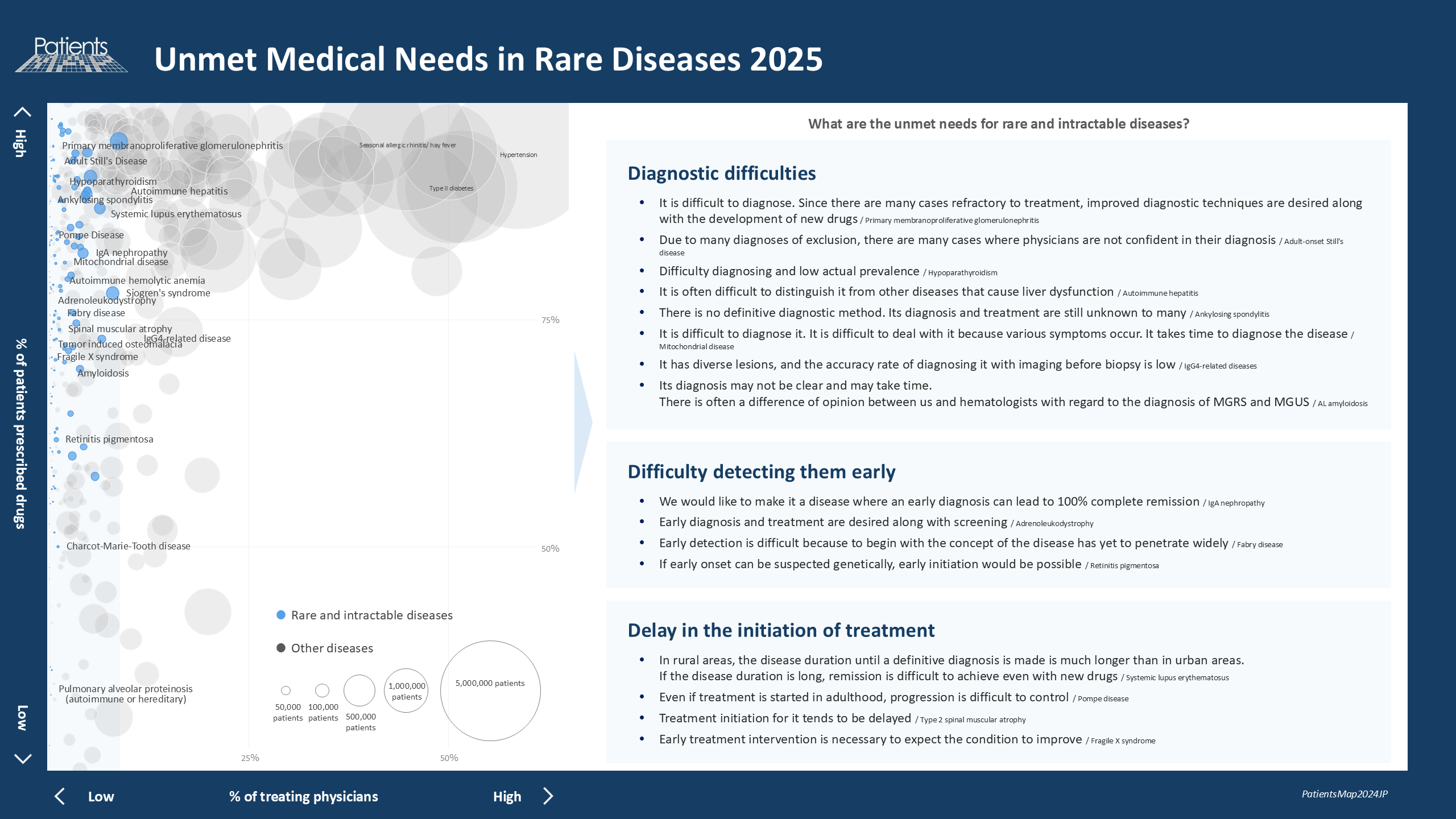February 28th, 25
SSRI Co., Ltd.
The last day of February every year is World Rare Disease Day (RDD).
This day was established to raise understanding and awareness of diseases, with the aim of improving the quality of life for patients and their families through better diagnosis and treatment. It started in Sweden in 2008, and in Japan, events have been held nationwide on the last day of February since 2010.
What are rare and intractable diseases?
Rare and intractable diseases are a general term for diseases with an extremely small number of patients, and it is estimated that approximately 300 million people worldwide suffer from these diseases. In Japan, 341 diseases have been designated as intractable diseases by the Ministry of Health, Labour and Welfare, and treatment research and development is currently being conducted. However, due to the small number of patients, diagnoses and treatments are difficult to establish, and the current situation is that there is still a lack of social understanding.
Our efforts for rare and intractable diseases
Since 2018, our company has been supporting RDD activities and assisting patients with rare and intractable diseases and their families.
In conjunction with RDD, we have analyzed the opinions of 20,000 Japanese physicians working in actual medical settings and summarized the current state of medical care for rare and intractable diseases and unmet needs. It is our hope that these analysis results will help resolve diagnostic and treatment challenges and build a better medical care environment.
[ Challenges in rare and intractable diseases shown by PatientsMap ]
The figure below shows the treatment status of rare and designated intractable diseases (left) and the results of data summarized regarding the reasons why physicians desire the advent of new drugs and their dissatisfaction and issues with the current treatments (right).

These results confirm the current situation where there are not only a small number of patients with rare and intractable diseases, but the number of physicians who treat them is also limited. As a result, it may take patients a long time to see a specialist or they may not be able to find a medical institution where they can receive an appropriate treatment.
Physicians who treat patients also commented on the diagnostic difficulties. Since rare and intractable diseases have a wide range of symptoms and many patients do not show typical symptoms, it is difficult to make a diagnosis in many cases. As a result, there are concerns that the diagnosis will be delayed and the condition will progress.
This situation suggests that patients with rare and intractable diseases may face many difficulties before they receive an early diagnosis and appropriate treatment. This highlights the importance of not only continuing to promote research on rare and intractable diseases, establishing treatment methods, and the discovery of new drugs, but also advancing the development of diagnostic technologies and methods and promoting understanding of these diseases.
Lastly
We empathize with the philosophy of RDD and will continue to gather, analyze, and disseminate information on rare and intractable diseases in order to be a bridge that connects patients, their families, medical professionals, and society. We hope that through this initiative, we can contribute to the advancement of diagnostic technologies and the improvement of the treatment environment.